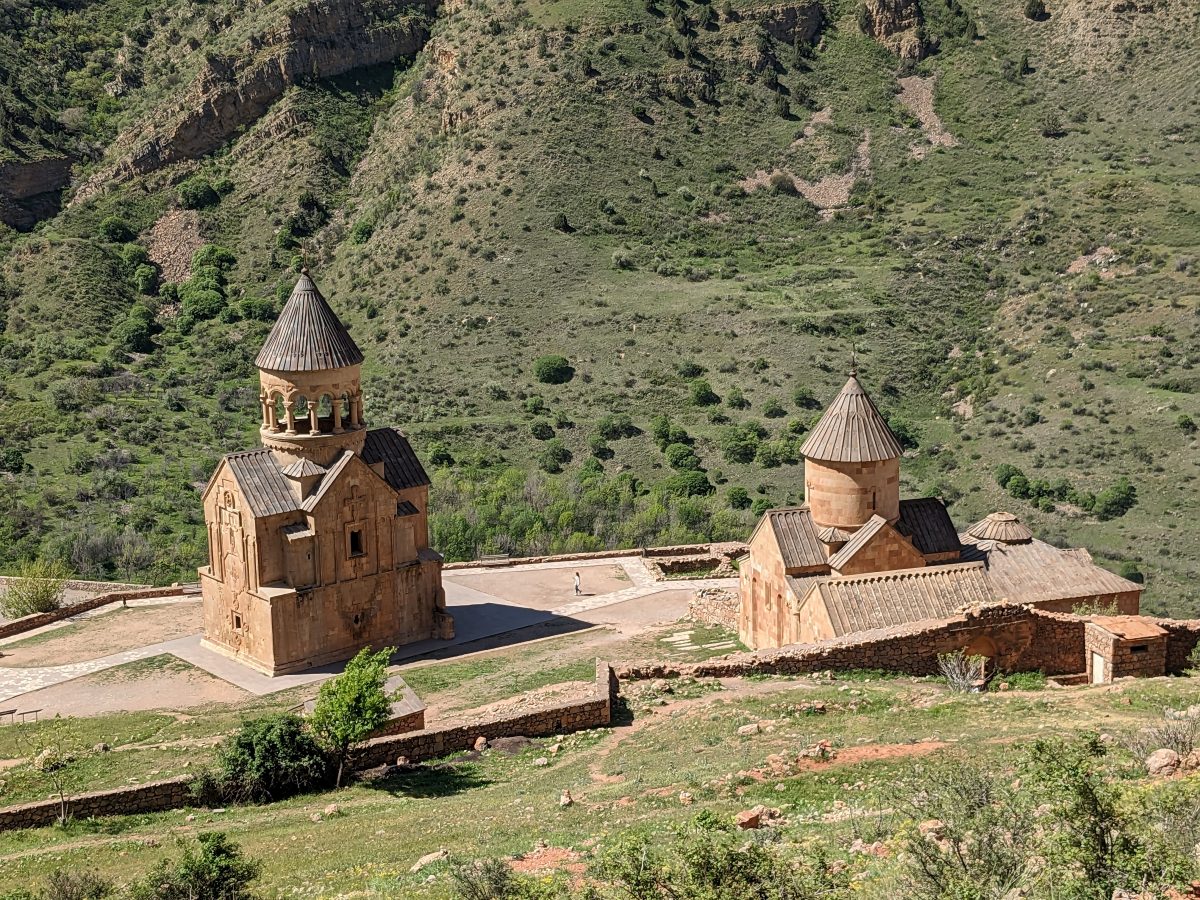A White Knuckle Ride
Next morning our alarms went off a stupid o’clock and we crept downstairs to collect packed breakfasts from Anna’s kitchen. At 6 am, bang on cue, a white Lada Niva pulled up outside the B&B. By arrangement out stepped two camo clad rangers from the Arpa Protected Landscape. They would take us up nearby Mount Gdnasar in search ofCaspian Snowcock. This is one of several species found in Armenia that I had not seen since an epic trip around Türkyie in 1986. Other hold outs from that tour include Bimaculated Lark, Grey-necked Bunting, Radde’s Accentor and Eastern Rock Nuthatch.
Driving North out of the village we stayed on the main road for a few km before turning East towards the mountains. The initial ascent was on tarmac, but we soon turned off onto a dirt road. One that inevitably got rougher and steeper as we gained height.
After 30 minutes or so our driver veered sharply off piste to crest a grassy ridge facing some vertical crags. We had arrived on-site!
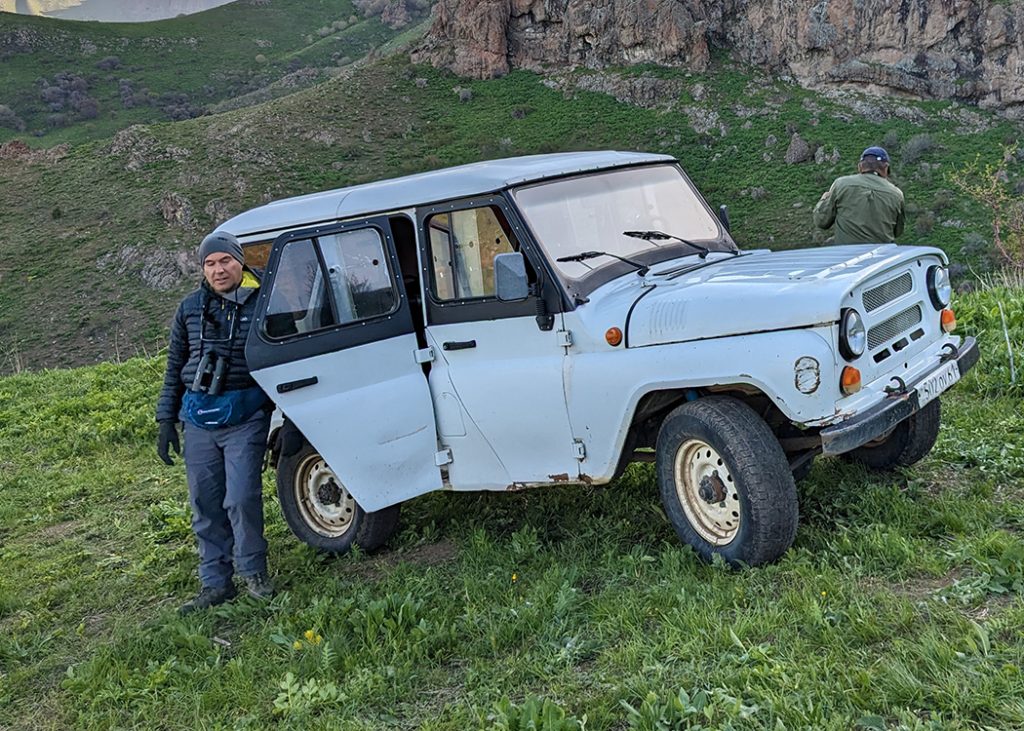
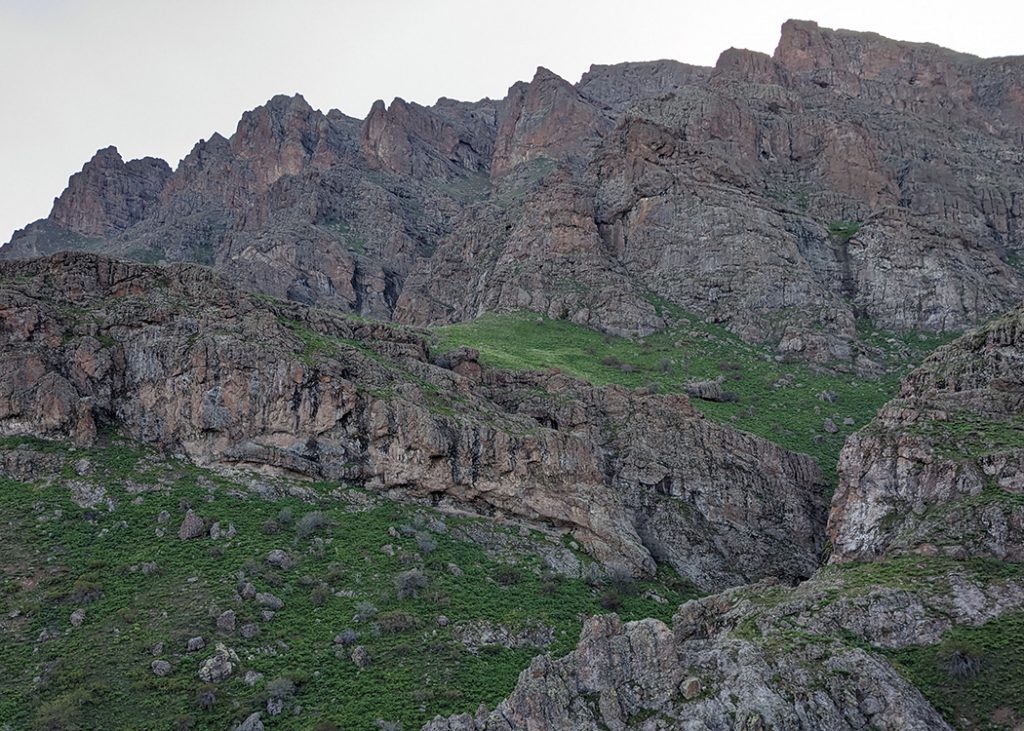
Snowcock!
Our guides proved not only to be excellent drivers, but also top observers. It was cool when we arrived, but as the sun got up a Snowcock started to call. We were struggling but the guides soon located it and got all our scopes on it. Way too distant for conventional photography I recorded some dodgy video.
There was not much else going birdwise and sadly we saw neither Brown Bear or Bezoar. Leopard, and a few do persist in this wild and remote landscape, was never really on the cards. So happy with our Snowcock we decided to return to Areni. The lower slopes were warming up and appeared quite birdy but our time with the rangers was up. Returning to Areni we paid the agreed fee and despite the lack of common language thanked them for a wonderful experience.
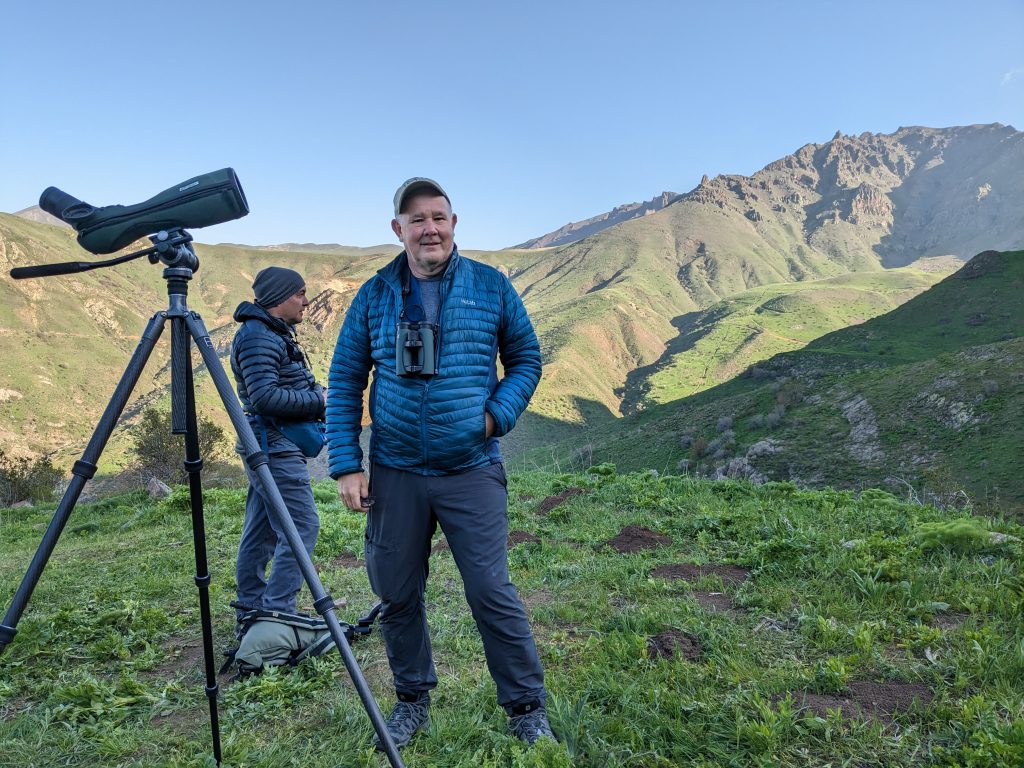
Noravank Monastery
Back at the B&B we took a quick break and loaded our gear into the Toyota. Our next destination, Noravank Monastery, is a newish site for Persian Wheatear. Although not rare globally this species is tricky to see in the WP. Many catch up with it wintering in Kuwait. Alternatively small numbers breed in southern Armenia or in neighbouring Nakhchivan, a landlocked enclave of Azerbaijan. The latter is hard to access and most Armenian records of Persian Wheatear are from the southern border with Iran. Hence a reliable site in the Areni region, where acccording to eBird they were already present in 2023, was very welcome.
Noravank lies at the head of a steep sided gorge just a short drive on good roads from our accomodation . There is ample car-parking, but like Khor Virap it is on the main tourist circuit and gets busy. We made two visits, mid-morning and late-afternoon; both had their moments! Of interest to the toursits are the well preserved monastery buildings which date back to the 13th century. From a birding perspective most of the action is on the stony slopes beyond the perimeter wall.


There we easily found several pairs of Eastern Black-eared Wheatear and some flightly flocks of Red-fronted Serin.
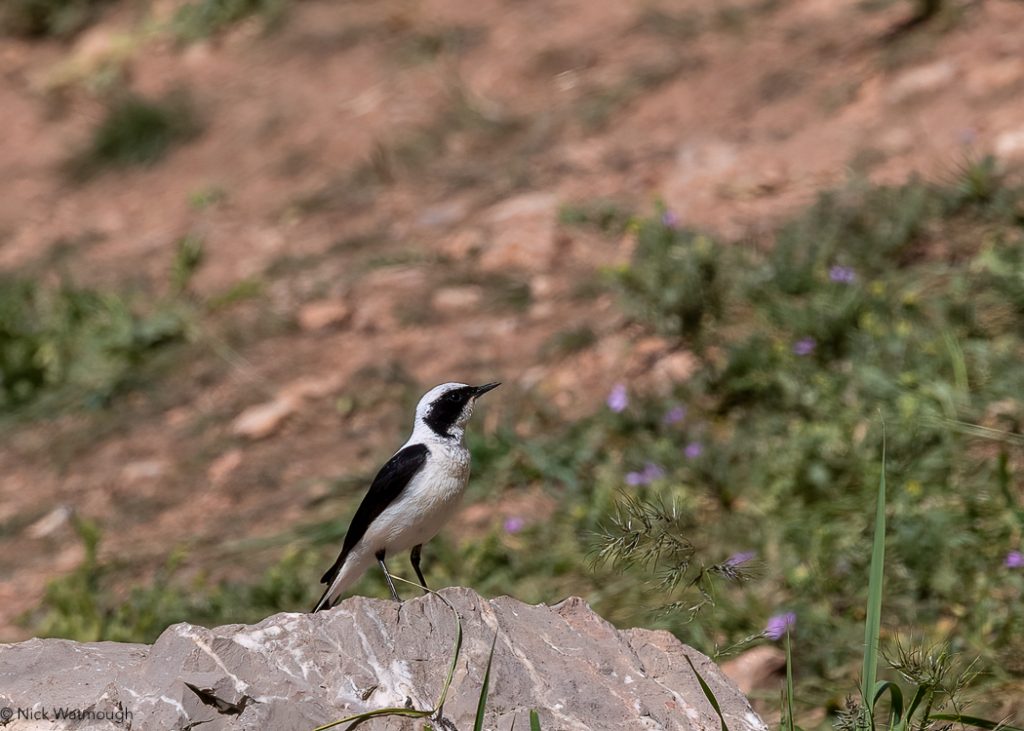
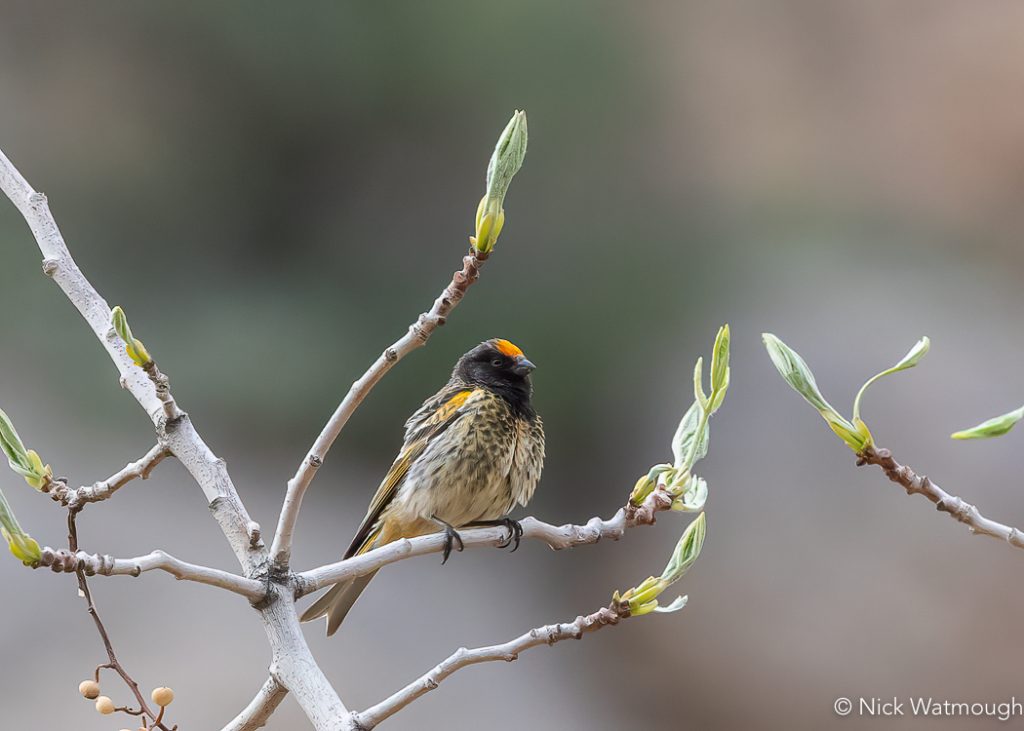
A Mad Scramble!
Overhead were Red-billed Choughs and Crag Martins which appeared to be nesting in the monestary buidings.
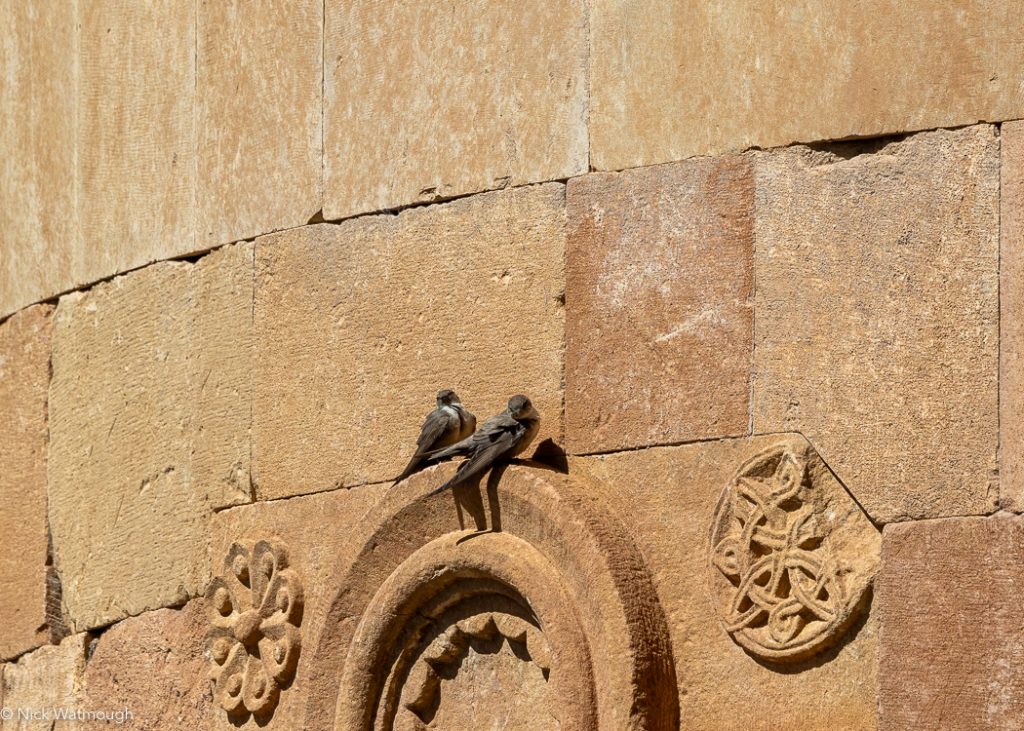
Calling from the slopes we heard, and eventually saw, Blue Rock Thrush and Eastern Rock Nuthatch. This supersized, and very loud Nuthatch, was another of the species I had not seen since 1986.
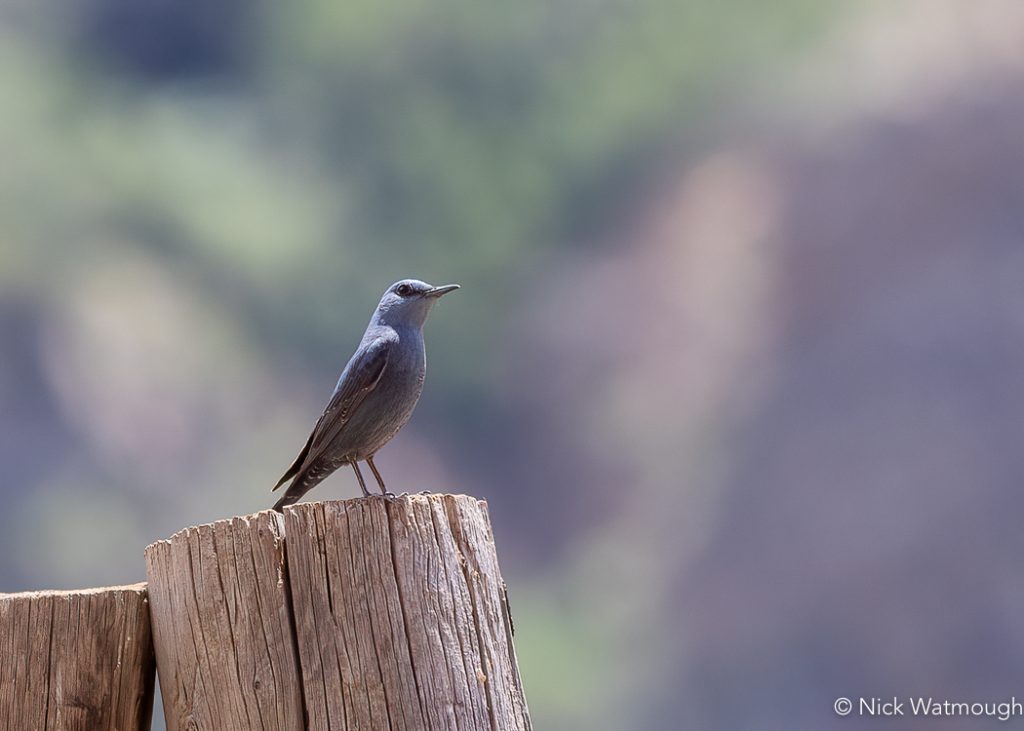
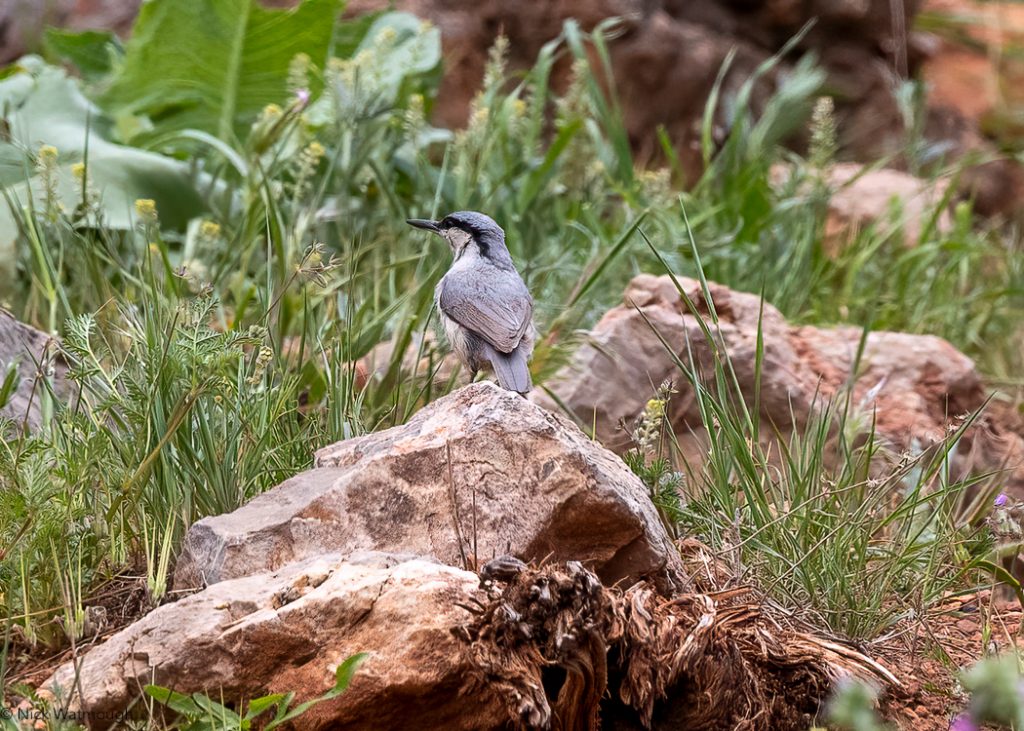
Whilst this was quality birding there was no sign of the star turn. Leaving Gramham to photograph Eastern Black-eared Wheatear I slowly started to climb the scree covered slope towards the cliffs. The terrain was uncertain and it took me some twenty minutes to reach the big boulders at the base of the cliffs. Here I heard an unfamilar song not far away. Arms out-stretched and holding on tight to keep my footing I peered over the top of a big rock. A small bird with a red tail jumped up on top of some nearby boulders – Persian Wheatear (WP #743). Bollocks! If I let go to use my camera I would take a big tumble! Gingerly I worked my way to a more stable position, but the birds saw me and flew up to the high cliffs.
I managed to raise Graham on WhatsApp (the 4G network is generally good throughout Armenia). Rather than follow in my footsteps I suggested an alternative and possibly easier route. Unfortunately by the time he arrived the wheatears had completely disappeared. The site was now very busy and we returned to town to regroup. This proved to be inspired. As we got out the car by the B&B and looked up there was a Lammergier over our heads.
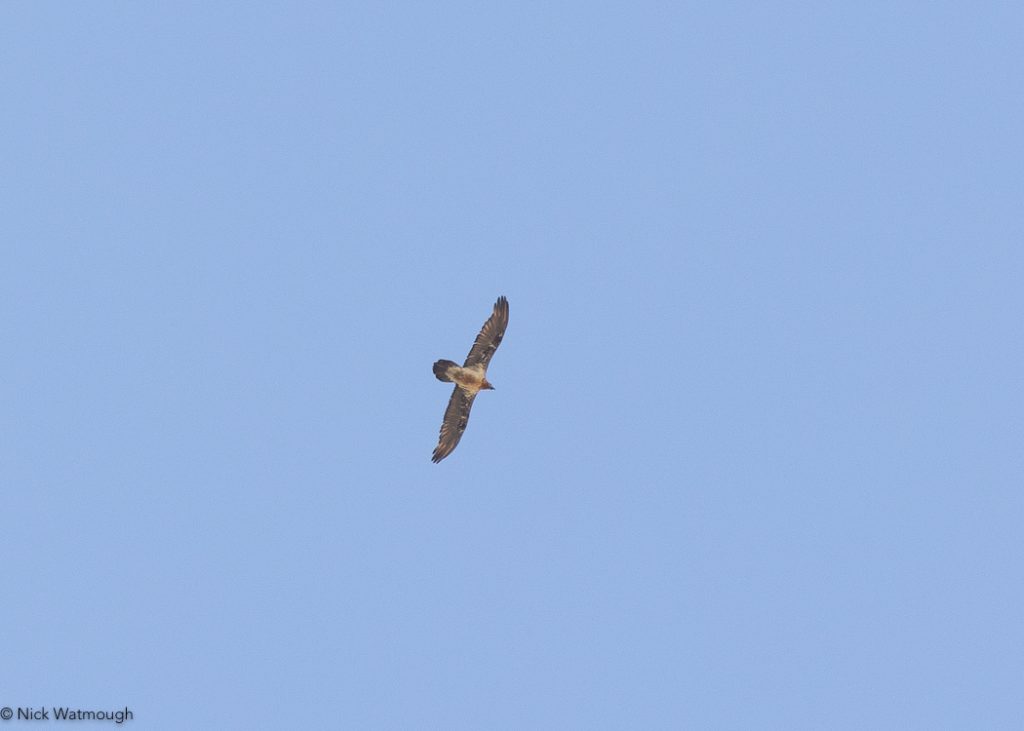
Take Two!
We returned later in the day. After another photoshoot with an obliging Black-eared Wheatear we clambered up the scree, but got seperated.
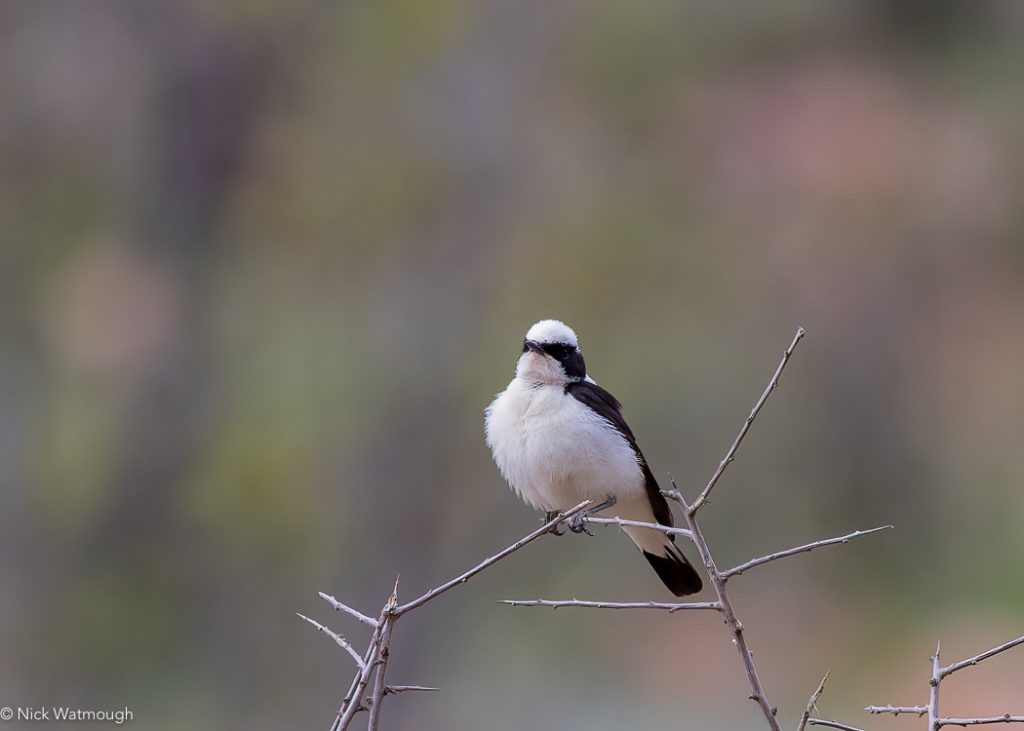
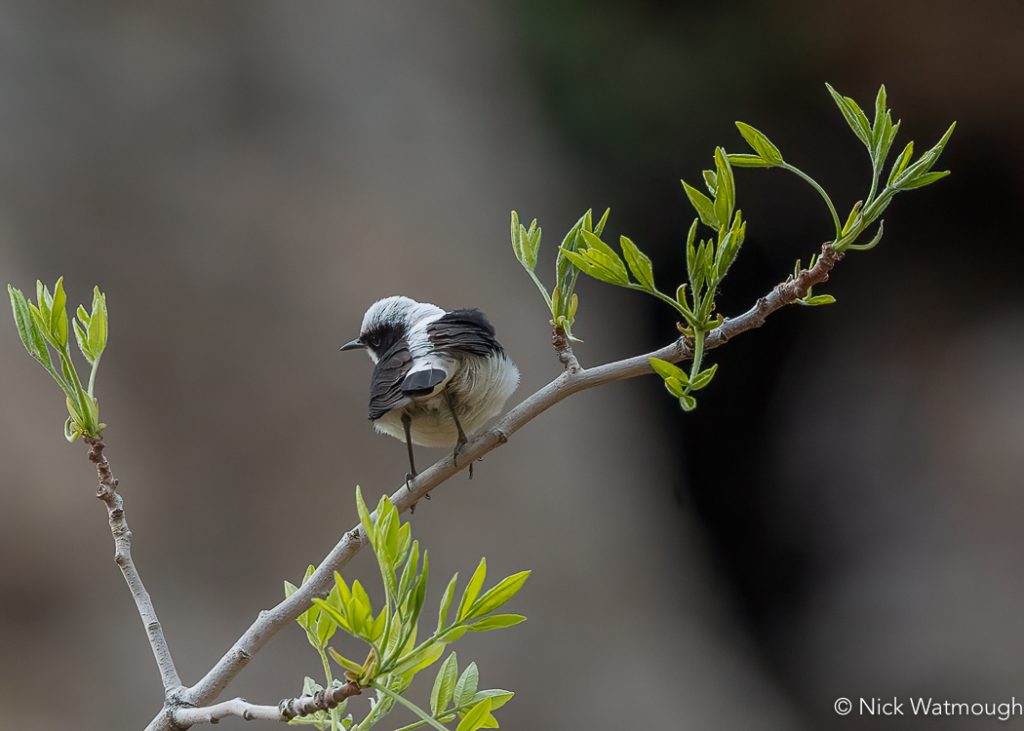
The Persian Wheatears responded to my tape in the area of the lower boulders. I could not see them! Fortunately Graham could and manged some record shots. Before I could join him they headed off to the high crags. More bollocks! Unfortunately the quickest route back to the car was the way we came and it was much harder going down. My very slow descent was more about caution than age (honest). But on reflection it was a huge mistake not to have packed a walking pole – enough said!
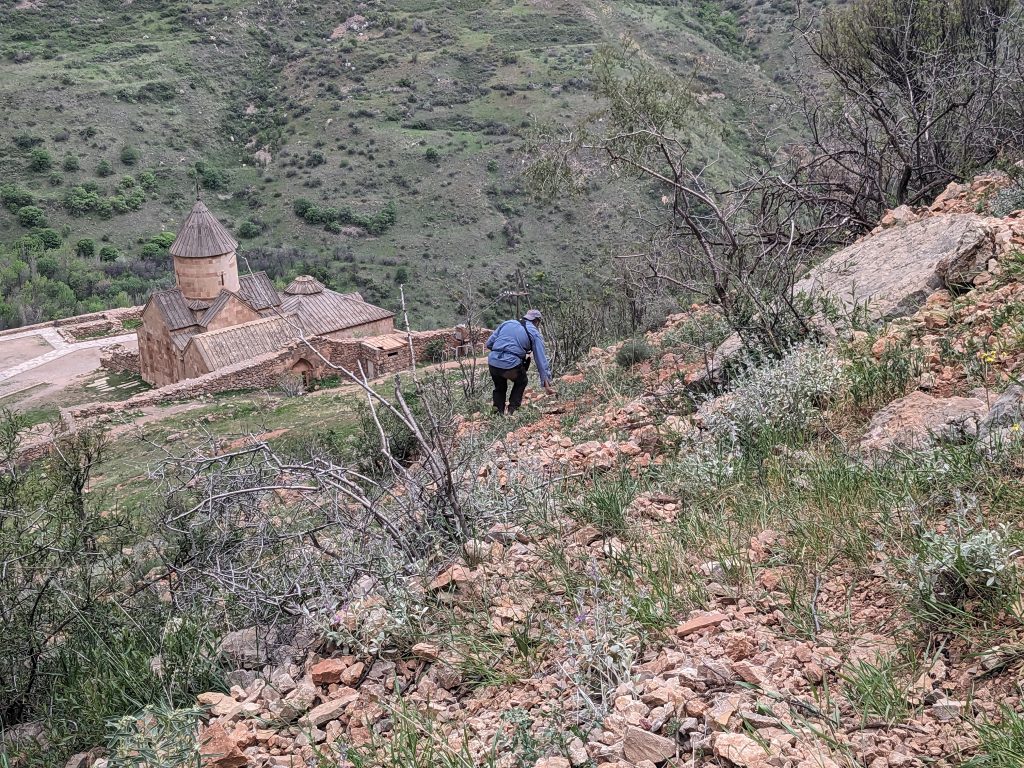
Not entirely satisfactory but we had both seen and heard Persian Wheatear. At this point we decided to call it a day and returned to the B&B. There, after a restorative shower we enjoyed another of Anna’s excellent home cooked dinners. Not to mention a glass of wine from the family cellar, Unfortunately Anna’s husband seemed a touch disappointed that we sign up for a tasting of his entire range. But that could have got very messy – and we had another long day ahead of us.

